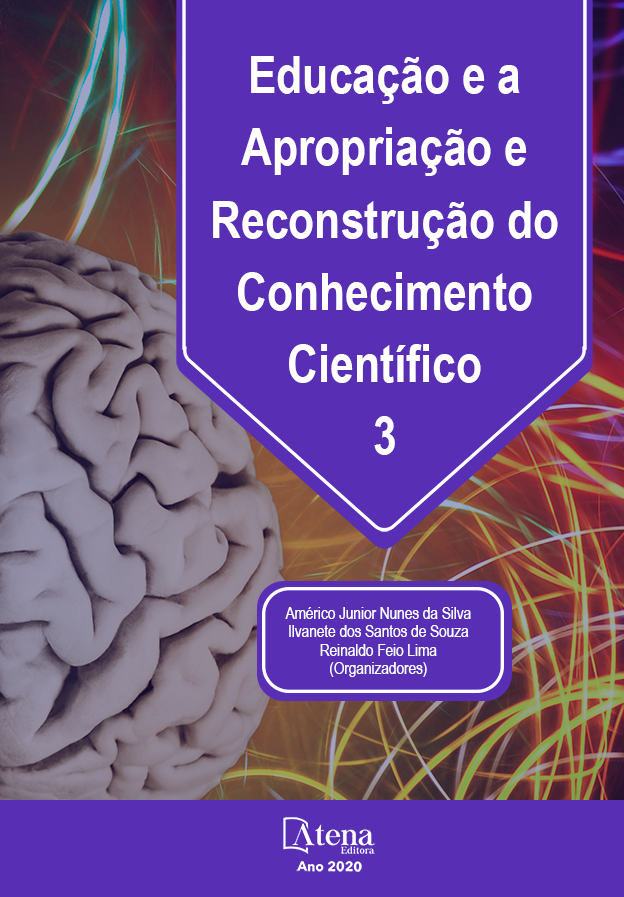
A ABORDAGEM CTSA E A APLICAÇÃO DE PEDAGOGIA INOVADORAS: A MORADIA COMO DESENVOLVIMENTO SUSTENTÁVEL NA ESCOLA
O presente estudo apresenta a construção de uma proposta de ensino-aprendizagem que permeia a educação ambiental e a abordagem CTSA, tendo como eixo norteador a os temas controversos. O Referencial teórico da pesquisa teve como base: Brasil (1998), Silva e Rodrigues (2016), Queirós e Melem (2001), Loureiro e Layrargues (2013), Freire (1996), Auler e Bazzo (2001), Tavares (2014) e Santos (1992), pois demonstram forte apelo ambiental, sustentável que são objetos desta pesquisa. Percebemos que a utilização da fibra do açaí com grande, benefício a sociedade, possibilitando uma nova visão na construção da moradia em cadeia e com isso a economia de materiais de construção e proteção sócio ambiental, favorecendo a geração de renda e de novas oportunidades sociais tendo a moradia como foco do desenvolvimento sustentável e por meio da abordagem CTSA. Essa pesquisa teve como objetivo orientar os alunos dos anos iniciais do ensino fundamental sobre a sustentabilidade e o reaproveitamento do caroço do açaí, demostrando como o mesmo pode ser usado na construção de civil e suas derivações. A metodologia aplicada a pesquisa foi de natureza qualitativa por meio de referencial teórico e pesquisa bibliográfica e quantitativa a partir da aplicação de um projeto ação que utilizou- se da lenda do açaí para aproximar os sujeitos da pesquisa. Percebeu-se que ao serem confrontadas com novas informações os estudantes interessaram-se em conhecer sobre sustentabilidade ambiental suas aplicações no contexto diário. Conclui-se que o conhecimento científico proporcionado aos alunos contribui para a formação crítica do sujeito e da modificação empírica dos saberes destinados a construção de casas por meio do caroço do açaí, favorecendo uma conscientização na preservação do meio ambiente e da sustentabilidade na construção de uma sociedade cidadã.
A ABORDAGEM CTSA E A APLICAÇÃO DE PEDAGOGIA INOVADORAS: A MORADIA COMO DESENVOLVIMENTO SUSTENTÁVEL NA ESCOLA
-
DOI: 10.22533/at.ed.0962027115
-
Palavras-chave: Moradia. Meio ambiente e Sustentabilidade. Caroço do açaí. Anos iniciais do Ensino Fundamental
-
Keywords: CTSA. Home. Environment and Sustainability. Açaí core. Early years of elementary school.
-
Abstract:
This study presents the construction of a teaching-learning proposal that permeates environmental education and the CTSA approach, with controversial themes as a guiding axis. The theoretical framework of the research was based on: Brazil (1998), Silva and Rodrigues (2016), Queirós and Melem (2001), Loureiro and Layrargues (2013), Freire (1996), Auler and Bazzo (2001), Tavares (2014) ) and Santos (1992), as they demonstrate strong environmental, sustainable appeal that are the objects of this research. We perceive that the use of açaí fiber with great benefit to society, enabling a new vision in the construction of chain housing and thereby saving construction materials and socio-environmental protection, favoring the generation of income and new social opportunities, housing as the focus of sustainable development and through the CTSA approach. This research aimed to guide students in the early years of elementary school on sustainability and the reuse of açaí seeds, demonstrating how it can be used in civil construction and its derivations. The methodology applied to the research was of a qualitative nature by means of theoretical framework and bibliographic and quantitative research from the application of an action project that used the legend of açaí to bring together the research subjects. It was noticed that when confronted with new information, students became interested in learning about environmental sustainability and its applications in the daily context. It is concluded that the scientific knowledge provided to the students contributes to the critical formation of the subject and the empirical modification of the knowledge destined to the construction of houses by means of the açaí core, favoring an awareness in the preservation of the environment and sustainability in the construction of a citizen society. -
Número de páginas: 11
- Cleudes Carvalho de Oliveira
- Ana Karla Barbosa Lima
- Mayara Cristina Figueiredo Lima
- Nazarena Guimarães
- Sidilene Brito da Silva
- Valdirene Barbosa da Silva
- Gissele Christine Tadaiesky Vasconcelos
- Cacilene Moura Tavares


